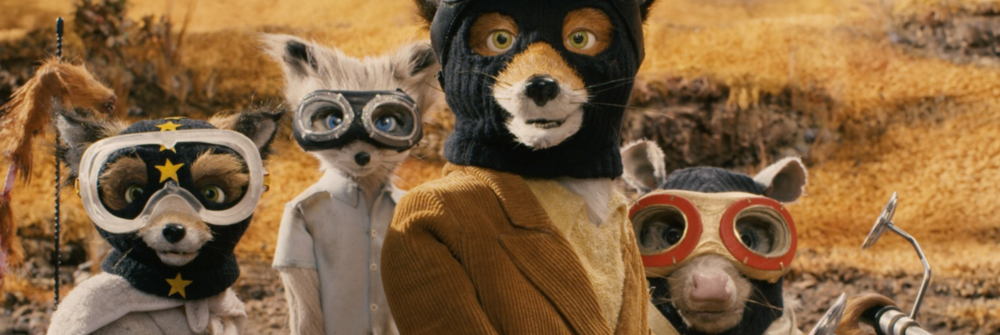Film Notes: FANTASTIC MR. FOX

FANTASTIC MR. FOX, 5th Anniversary Screening
7 p.m. Sunday, December 7, 2014
53 Wall Street Auditorium
Introduction and Film Notes by Archer Neilson
PDF
Directed by Wes Anderson (2009) 87 mins
Screenplay by Wes Anderson and Noah Baumbach from the novel by Roald Dahl
Produced by American Empirical Pictures
Released by Twentieth Century Fox Film Corp.
Featuring the voices of George Clooney, Meryl Streep, Jason Schwartzman, Bill Murray, Wally Wolodarsky, Michael Gambon, Willem Dafoe, Owen Wilson, and Eric Chase Anderson
The sixth feature and first animated film from writer/director/producer Wes Anderson, FANTASTIC MR. FOX is based on one of his first and favorite books as a child. He was given extensive access to author Roald Dahl’s archive by Dahl’s widow Felicity (namesake for the fantastic Mrs. Fox in the Anderson adaptation), who even allowed him to stay at Dahl’s home in Buckinghamshire, which inspired many of the sets and props for the film. The film debuted at the London Film Festival on October 14, 2009, just one day after the release of another Gen X filmmaker’s nostalgic adaptation of a children’s book, Spike Jonze’s WHERE THE WILD THINGS ARE. FANTASTIC MR. FOX received widespread critical acclaim, but was overshadowed during awards season by Pixar’s UP. In 2011, Richard Corliss of TIME named it one of the top 25 animated films ever made.
THE SCRIPT: FANTASTIC MR. FOX is the first film Anderson adapted from an existing work. He co-wrote the screenplay with Noah Baumbach (THE SQUID AND THE WHALE, FRANCES HA), with whom he had previously written THE LIFE AQUATIC WITH STEVE ZISSOU. The two expanded Dahl’s story significantly and borrowed a drugged berry sequence from his book DANNY, THE CHAMPION OF THE WORLD (something that barely made it past the lawyers for Dahl’s estate), but Anderson and Baumbach weren’t satisfied with the ending they devised. Luckily, in Dahl’s archive, they found an alternate ending the author had considered using, along with sketches for the illustrator, and adapted these for the film.
THE MUSIC: This film was Anderson’s first with composer Alexandre Desplat (THE KING’S SPEECH, ARGO), who went on to score Anderson’s next two features, MOONRISE KINGDOM and THE GRAND BUDAPEST HOTEL. The soundtrack adds the Beach Boys to the Anderson jukebox for the first time, and it borrows music from other films ranging from Disney’s ROBIN HOOD to Truffaut’s TWO ENGLISH GIRLS. It also features a snippet of the theme song from the original FANTASTIC MR. FOX audiobook, a new piece written and performed by Jarvis Cocker of Pulp in the role of Petey, and three songs sung by Burl Ives, a nod to his role in the Rankin/Bass stop-motion classics that inspired the film’s animation style.
THE PROCESS: Development of the film began in 2004 and production in 2007. Much of the dialogue was recorded outdoors—unusual for animation— primarily here in Connecticut at the Norwalk farm of Karen Duffy, who voices Linda Otter. The film was shot at 3 Mills Studios in London using Nikon D3 still cameras. Shooting took place on 29 sets, with roughly 56,000 individual images appearing in the final film. Though closely involved in all aspects of production, Anderson famously directed much of the animation from Paris, reviewing sequences and sending iPhone videos of himself acting out the scenes as references for the animators.
DID YOU KNOW: 535 puppets were created for the film. 17 different styles were made for Mr. Fox alone, each constructed in six different sizes ranging from nearly two feet to a mere quarter inch in height. Each of the standard 12" puppets used for most of the close-ups cost between $20,000 and $83,000 to construct.
Presented in the Treasures from the Yale Film Archive series with support from Paul L. Joskow '70 M.Phil., '72 Ph.D. Printed Film Notes are distributed to the audience before each Treasures screening.